Postmaster General Warns USPS Will Make “More Aggressive” Changes to Your Mail
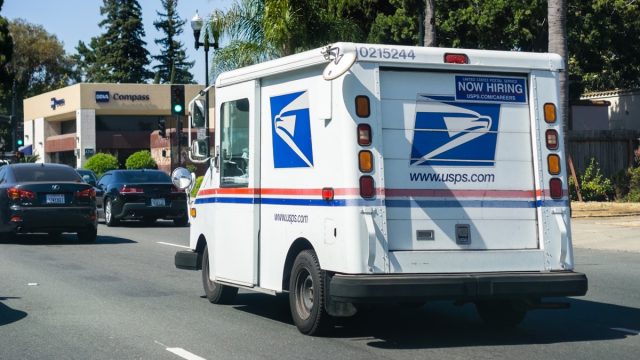
The U.S. Postal Service (USPS) is currently in the midst of a major organizational overhaul—and customers have certainly been bearing the brunt. In March 2021, the USPS unveiled its 10-year Delivering for America (DFA) plan, which is dedicated to pulling the agency out of financial ruin and putting it back on the path of sustainability. This initiative has already hit customers with several changes to the mail, including multiple price hikes and slowed-down delivery service. But we’re still in the beginning stages of this long-term transformation, and the agency’s Postmaster General is warning of future postal adjustments. Read on to find out why he says the USPS will need to be “more aggressive” going forward.
READ THIS NEXT: USPS Is Making More Changes to Your Mail, Starting Sunday.
The Postal Service says it is improving thanks to its Delivering for America plan.
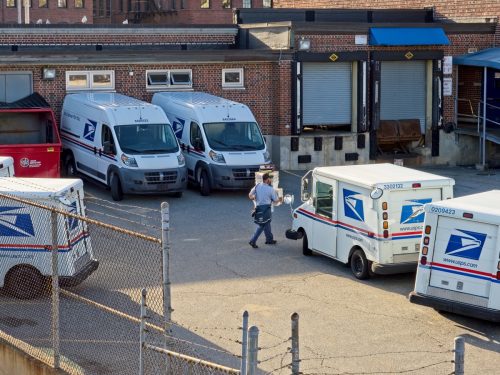
The USPS just recently released an overview for the second year of its ongoing transformation. Published on April 17, the Second-Year Progress Report details the results of various strategies and initiatives that were implemented by the agency over the last year through its DFA plan. According to the report, the Postal Service has accomplished multiple milestones over the last year. These include improved service performance with 95.6 percent of packages being delivered on-time in the 2022 fiscal year, the creation of six new sorting and delivery centers, and increased daily package processing capacity through the installation of 249 new U.S. package process machines.
“As we enter the third year of our Delivering for America plan, there is a new energy and vibrancy at the U.S. Postal Service,” Postmaster General Louis DeJoy said in a statement. “As I travel the nation meeting with the great men and women of the Postal Service, it is clear the investments we are making are paying off—and it is showing through our improved delivery for the American people and our business customers. The progress we’ve made in the last two years demonstrates that our plan is realistic and achievable. We’re just getting started.”
But the agency has still fallen short on its financial goals.
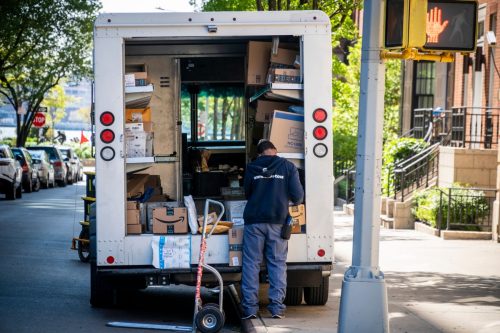
The last year didn’t go as well as the Postal Service expected in all areas, however. During a May 9 Board of Governors meeting, DeJoy said that the agency has decreased its 10-year projected financial losses from over $160 billion to around just $70 billion. But this is still “not where we want to be,” he acknowledged. According to the original DFA plan, the USPS was expecting to start breaking even on its annual finances by the beginning of the 2023 fiscal year.
But the agency has not yet reached positive net income results. The Postal Service just reported a $2.5 billion net loss for the second quarter of this year—which is actually higher than its losses in the same quarter of 2022. “We continue to focus on achieving break-even financial results for the 10-year period, although inflationary and economic conditions, as well as administrative hurdles, have proven difficult,” DeJoy said in a separate statement about its second quarter financial results.
RELATED: For more up-to-date information, sign up for our daily newsletter.
DeJoy warns that the USPS will need to be “more aggressive” as a result.
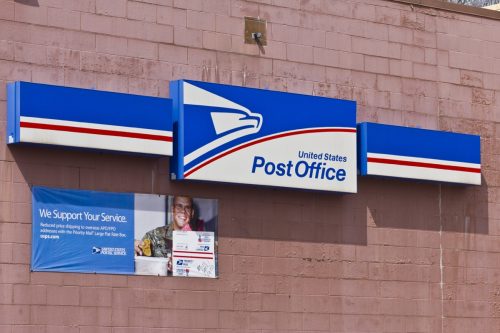
Financial results are being negatively impacted due to “mail volume declines, operational information, and elevated retirement expenses,” according to the Postal Service. As a result, DeJoy is warning that the USPS will need to increase the pace in which it makes changes in order to achieve the long-term financial goals of its 10-year transformation.
“Not meeting our short-term financial goals as specified in the DFA is not taken lightly,” DeJoy said during the May 9 meeting. “We will be taking more aggressive actions to get back on track to overcome matters unforeseen in our DFA forecast.”
Customers can expect more price hikes on their mail going forward.
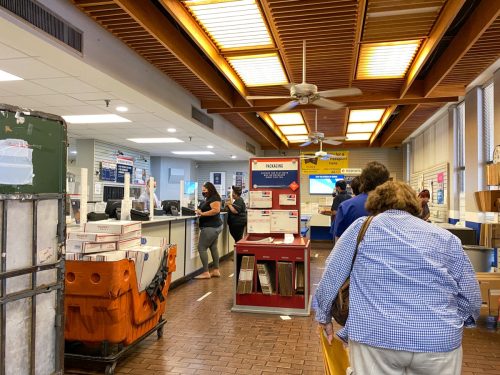
After raising prices in January, the USPS has already announced plans to hike costs for customers again this year in July. But you can expect for these increases to continue beyond this summer as DeJoy indicated that one of the “unforeseen matters” it needs to overcome is “inflationary costs incurred that far exceeded” its DFA forecast.
“We are managing the costs within our control, such as reducing work hours by 7 million hours compared to the same quarter last year,” USPS Chief Financial Officer Joseph Corbett said in a statement. “However, price increases are necessary to try to offset declining mail volumes and inflation. Despite these increases, our prices remain among the most affordable in the world.”
In the second-year DFA progress report, the USPS said it will implement two rate changes each year going forward—one in January and the second in July. “These rate changes will help mitigate years of pricing imbalances and offset our exposure to inflation,” the agency explained. “By the end of DFA’s 10-year transformation and modernization, we expect our new pricing policy to generate $44 billion in additional revenue.”
- Source: https://about.usps.com/what/strategic-plans/delivering-for-america/assets/usps-dfa-two-year-report.pdf
- Source: https://about.usps.com/newsroom/national-releases/2023/0427-usps-improving-service-reliability-in-first-two-years-of-dfa.htm
- Source: https://about.usps.com/newsroom/national-releases/2023/0509-pmg-and-ceo-louis-dejoy-remarks-during-may-9-postal-service-bog-meeting.htm
- Source: https://about.usps.com/what/strategic-plans/delivering-for-america/assets/USPS_Delivering-For-America.pdf
- Source: https://about.usps.com/newsroom/national-releases/2023/0509-usps-reports-second-quarter-fiscal-year-2023-results.htm